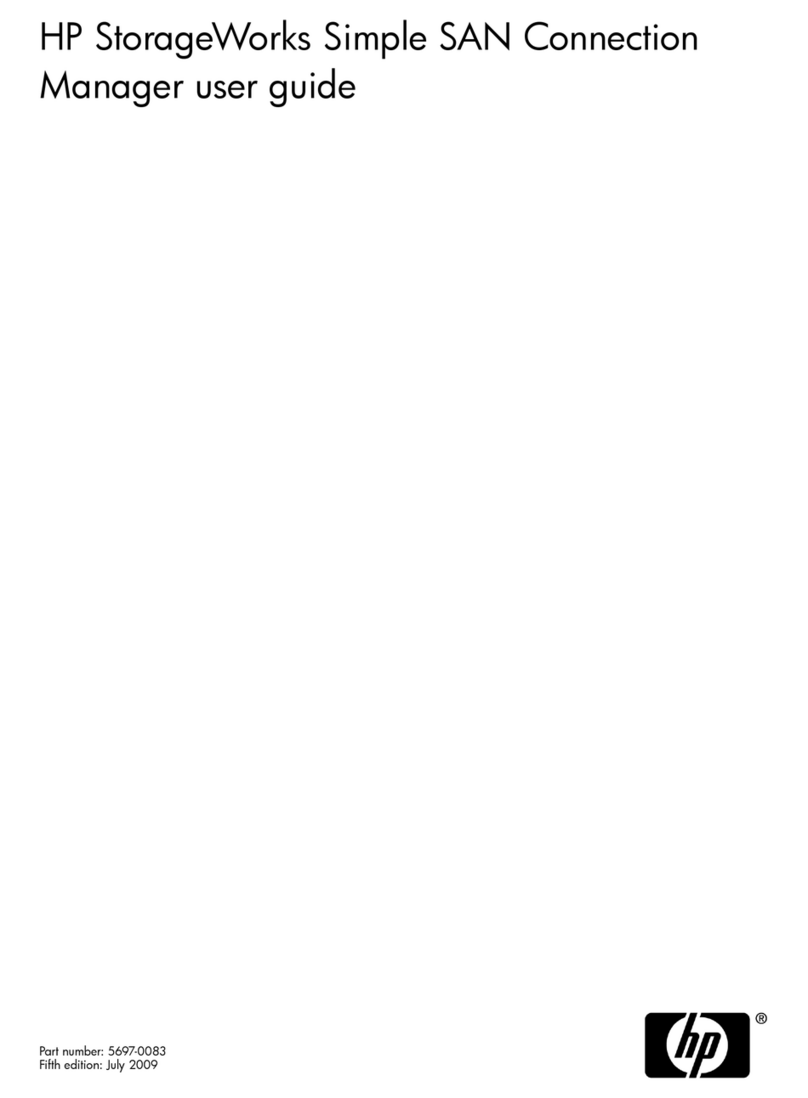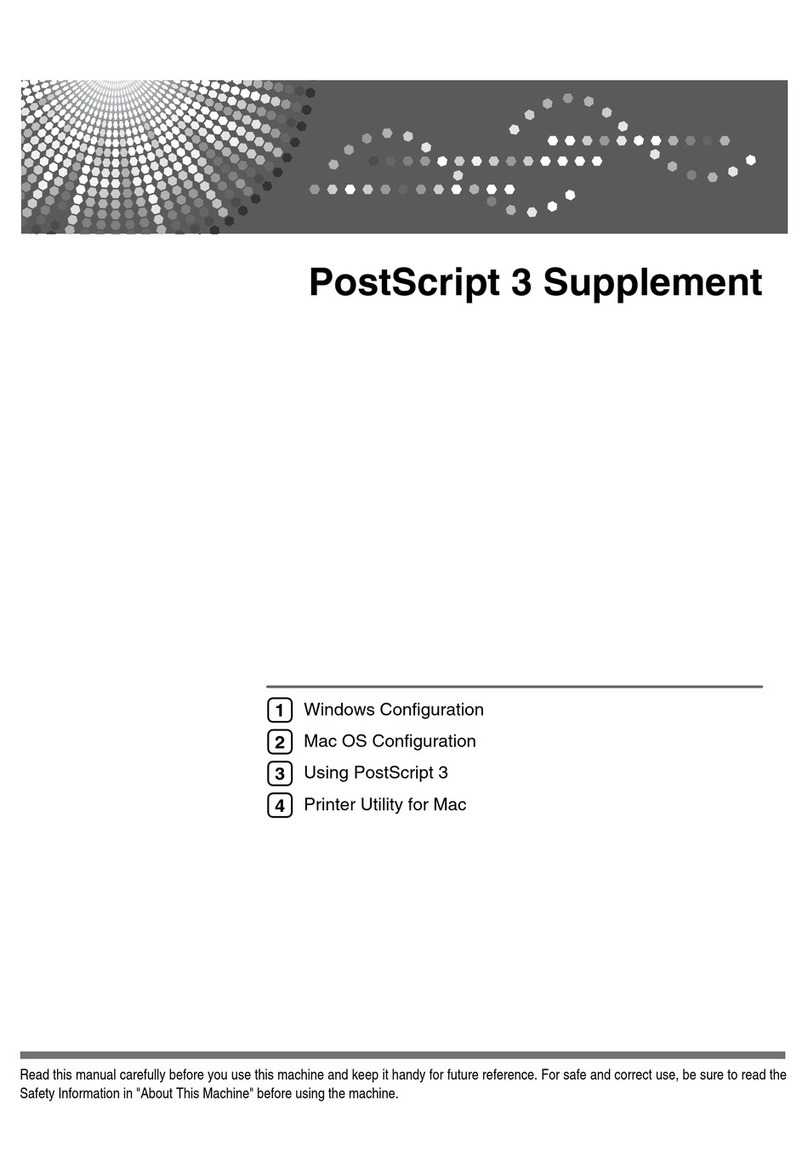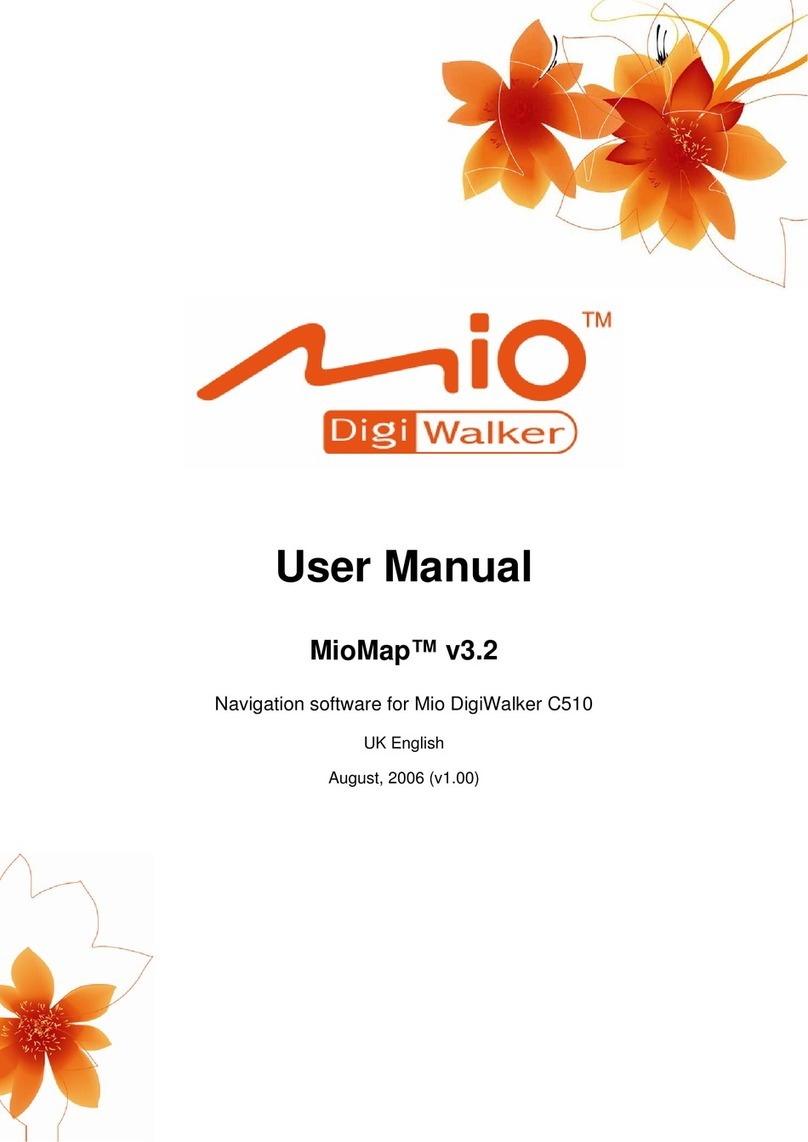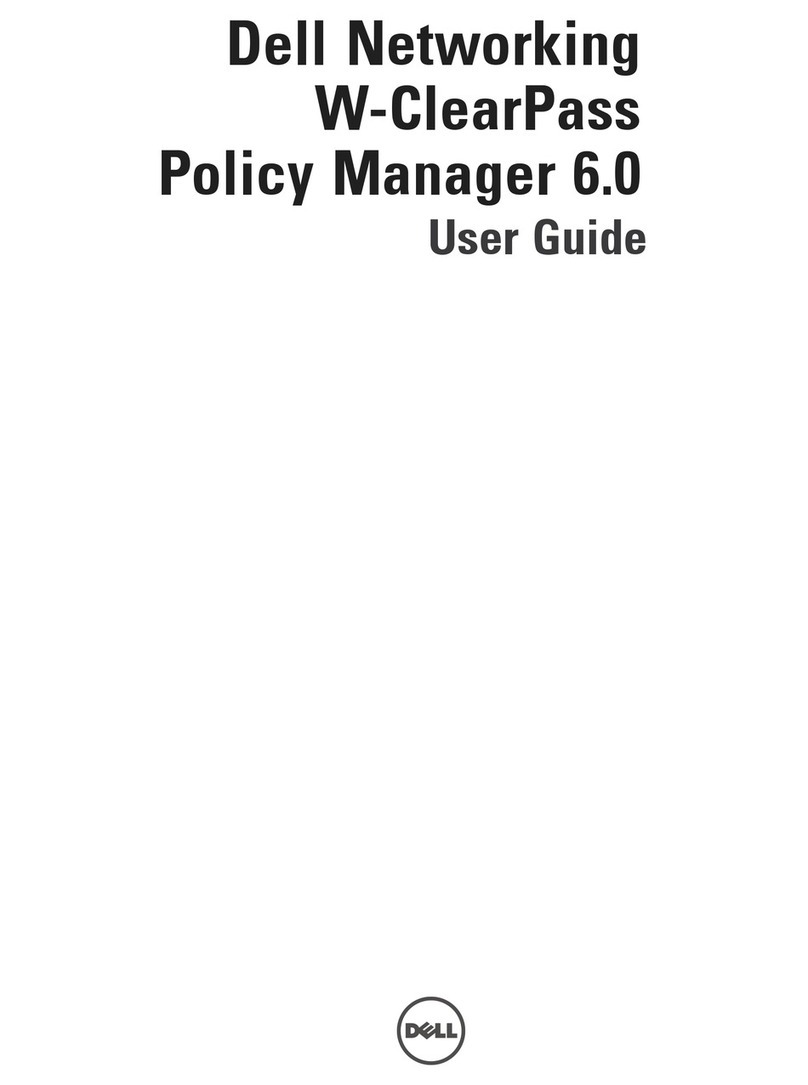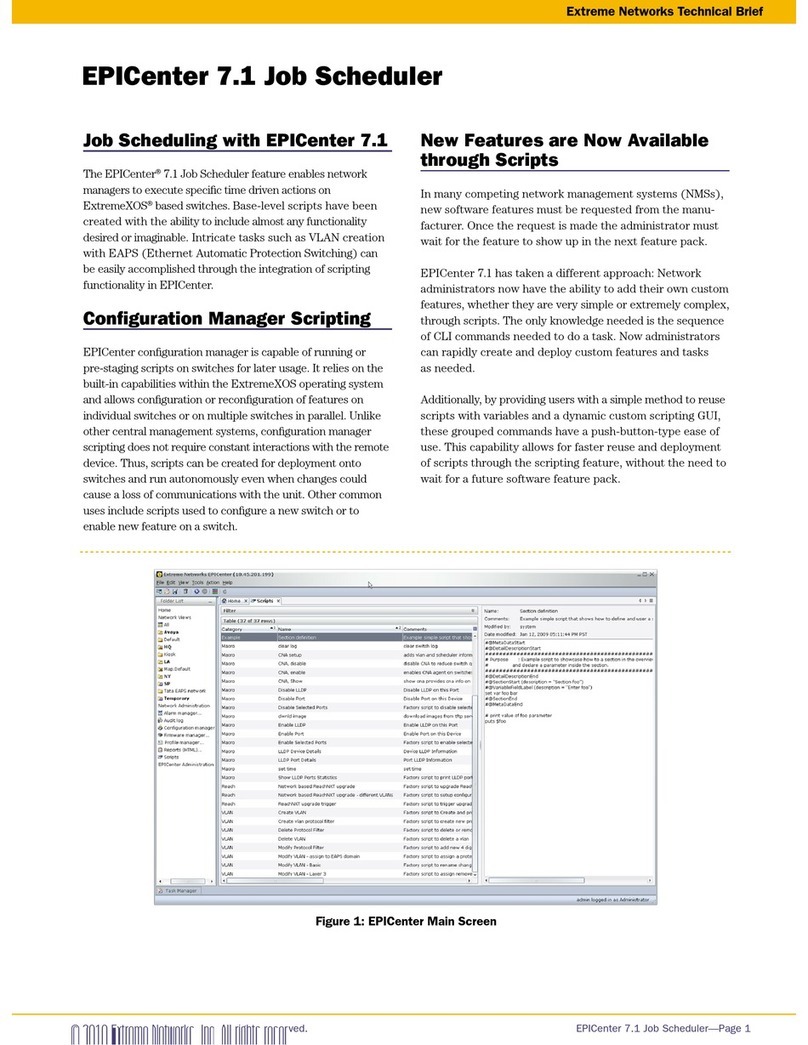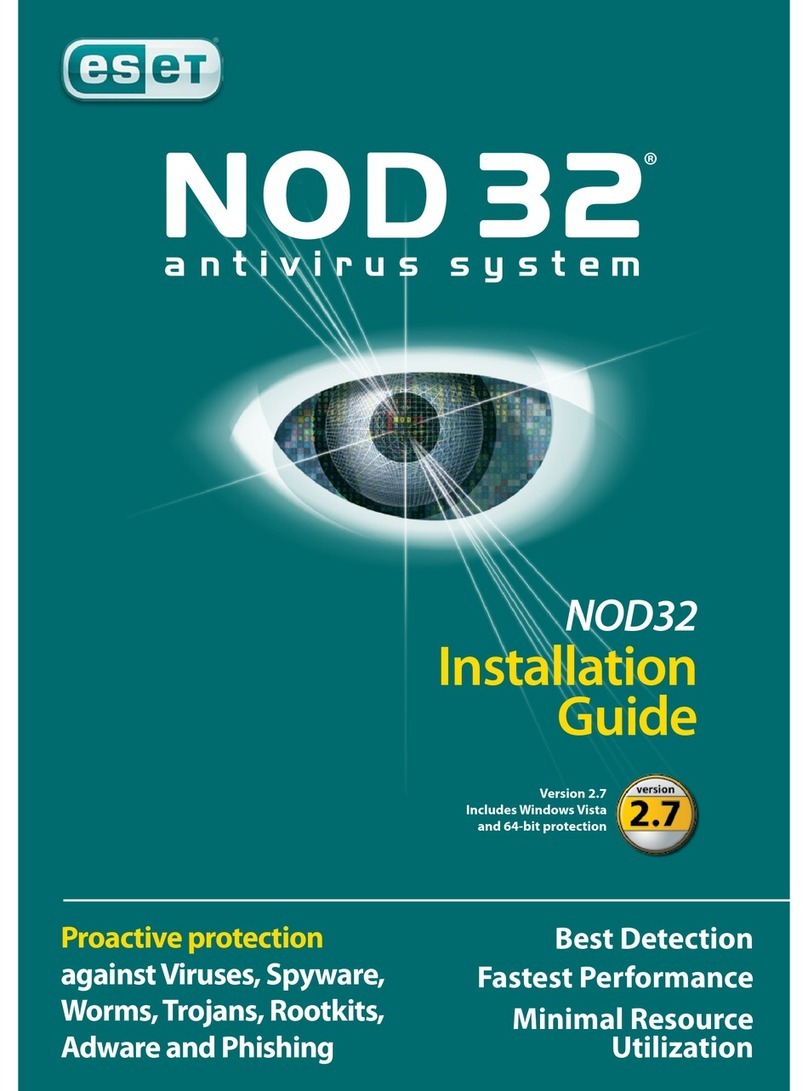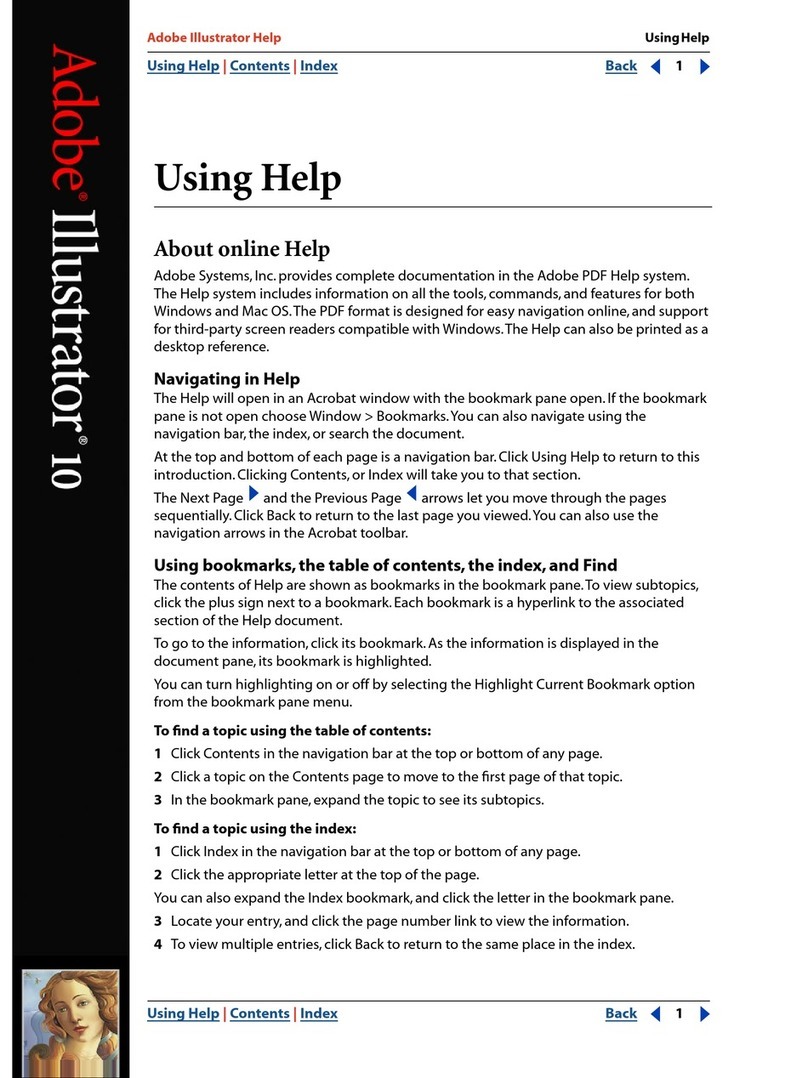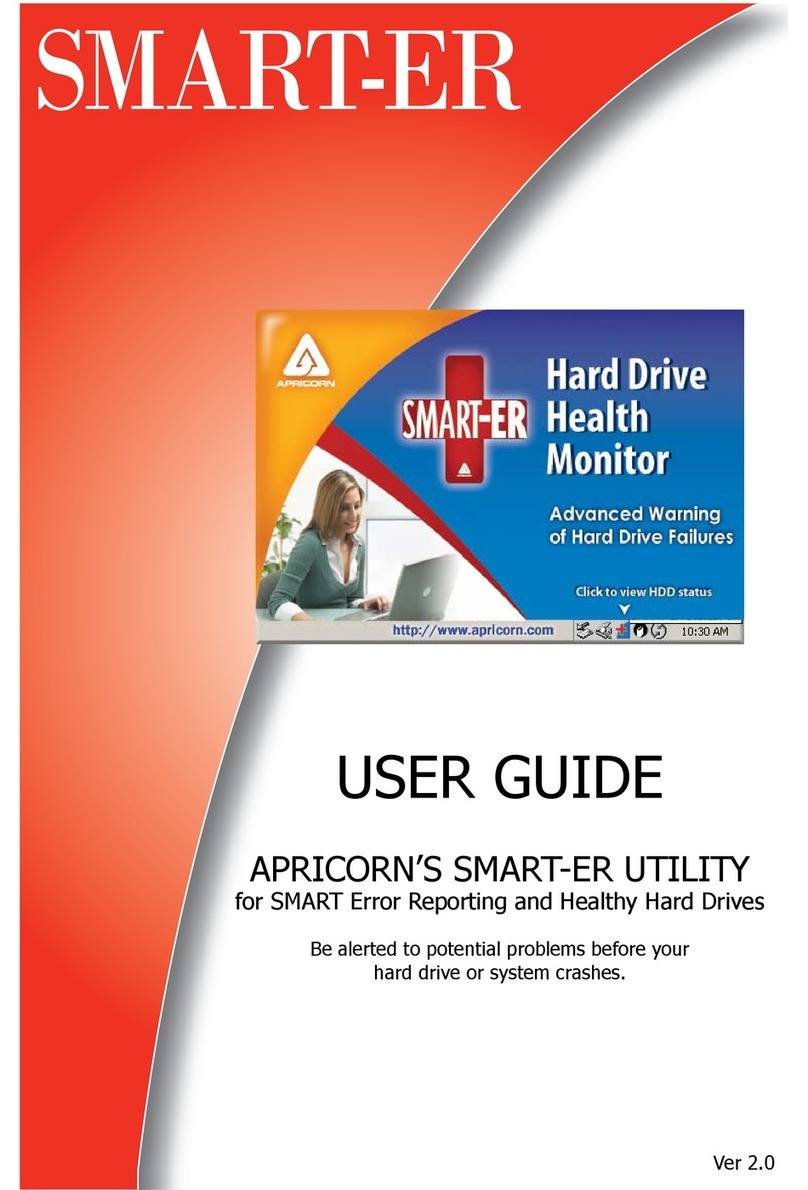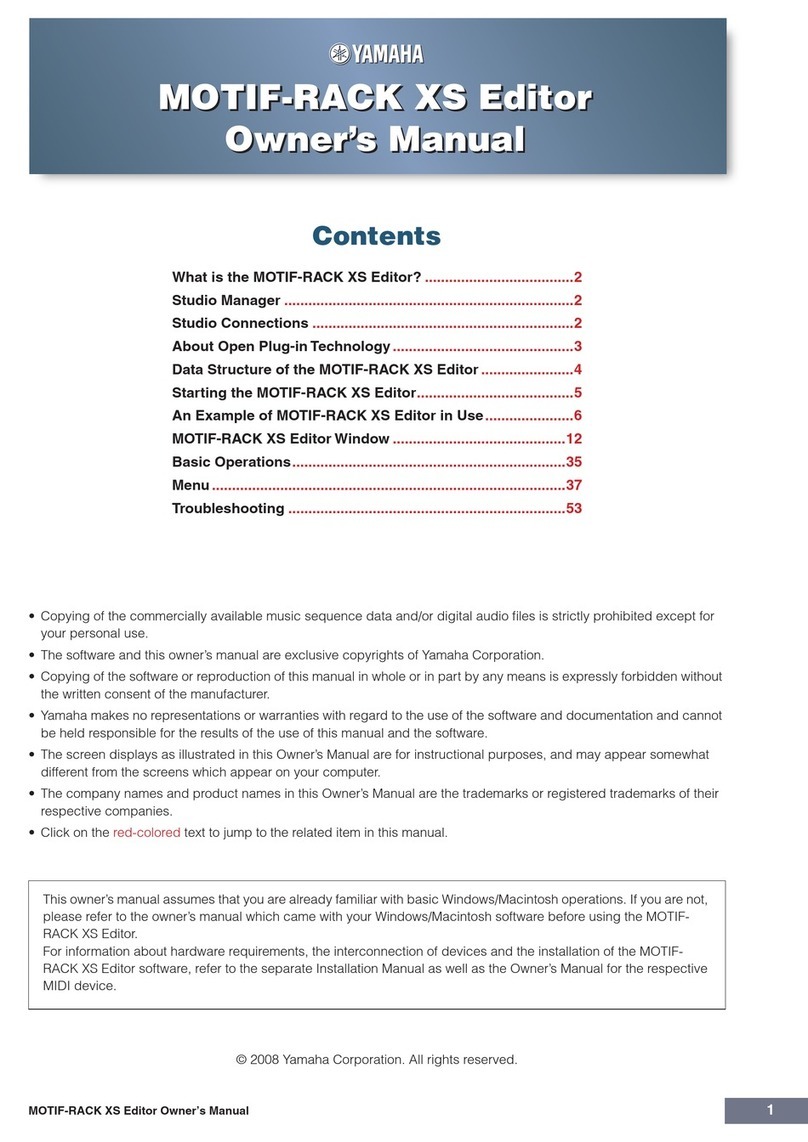impinj RShell User manual

REV 4.2 2009-08-27 Proprietary and Confidential www.impinj.com
Copyright © 2009, Impinj, Inc.
Impinj, Octane, and Speedway are either
registered trademarks or trademarks of Impinj, Inc.
RShell Reference Manual
Speedway® Revolution – Octane 4.2.0

RShell Reference Manual
Revision 4.2, Copyright © 2009, Impinj, Inc. Proprietary and Confidential 1
Table of Contents
1 Introduction ........................................................................................................................3
2 Document Conventions ......................................................................................................3
2.1.1 Syntax ..........................................................................................................................3
2.1.2 Examples......................................................................................................................3
3 Overview ............................................................................................................................3
3.1 Help ....................................................................................................................................4
3.2 Response Format ................................................................................................................5
3.3 Compatibility......................................................................................................................7
4 Command Reference ..........................................................................................................7
4.1 Reboot Command...............................................................................................................7
4.2 Config Command ...............................................................................................................7
4.2.1 Config Access Command ............................................................................................8
4.2.2 Config Image Command..............................................................................................8
4.2.2.1 Config Image Default Command..........................................................................9
4.2.2.2 Config Image Fallback Command ........................................................................9
4.2.2.3 Config Image Metafile Command.........................................................................9
4.2.2.4 Config Image RetrieveMode Command.............................................................10
4.2.2.5 Config Image Upgrade Command ......................................................................10
4.2.3 Config Logging Command........................................................................................11
4.2.4 Config Network Command........................................................................................13
4.2.4.1 Config Network Hostname Command................................................................14
4.2.4.2 Config Network LLA Command ........................................................................14
4.2.4.3 Config Network mDNS Command.....................................................................14
4.2.4.4 Config Network DHCP Command .....................................................................15
4.2.4.5 Config Network DNS Command........................................................................15
4.2.4.6 Config Network DNS Domain Command..........................................................16
4.2.4.7 Config Network IP Command.............................................................................16
4.2.4.8 Config Network NTP Command.........................................................................18
4.2.5 Config RFID Command.............................................................................................18
4.2.5.1 Config RFID ResetStats Command ....................................................................18
4.2.5.2 Config RFID LLRP Command...........................................................................18
4.2.5.2.1 Config RFID LLRP Inbound Commands...................................................... 19
4.2.5.2.2 Config RFID LLRP Outbound Commands................................................... 19
4.2.6 Config SNMP Command...........................................................................................21
4.2.6.1 Config SNMP Service Command.......................................................................21
4.2.6.2 Config SNMP Access Command........................................................................21
4.2.6.3 Config SNMP Write Command..........................................................................22
4.2.6.4 Config SNMP EPCG Command.........................................................................22
4.2.6.4.1 Config SNMP EPCG Device Command....................................................... 22
4.2.7 Config System Command..........................................................................................23
4.2.8 Config System Time Command.................................................................................23
4.3 Show Command ...............................................................................................................25
4.3.1 Show Image Command..............................................................................................25
4.3.2 Show Logging Commands.........................................................................................31

RShell Reference Manual
2.Proprietary and Confidential Revision 4.2, Copyright © 2009, Impinj, Inc.
4.3.3 Show Network Command..........................................................................................32
4.3.4 Show RFID Command...............................................................................................38
4.3.4.1 Show RFID Stat ..................................................................................................39
4.3.4.2 Show RFID LLRP Commands............................................................................41
4.3.5 Show SNMP Command.............................................................................................42
4.3.6 Show System Command............................................................................................44
5 Revision History...............................................................................................................47
Notices:.......................................................................................................................................47

RShell Reference Manual
Revision 4.2, Copyright © 2009, Impinj, Inc. Proprietary and Confidential 3
1 Introduction
The Speedway Revolution reader’s Command Line Interface (CLI) is called RShell, it can be
accessed after logging in via a serial, Telnet, or an SSH connection. The CLI can be used to
configure, maintain and acquire status of an RFID reader.
2 Document Conventions
2.1.1 Syntax
The following markings are used throughout this document:
[] – optional
() – grouping
| - either
<> - placeholder
Literal – (reduced size +bold) a literal term
Syntax example:
Usage: command1 [<paramA> (on|off)]
Would indicate that command1 had optional parameters, if paramA is specified, it must be
followed by ‘on’ or ‘off’.
2.1.2 Examples
Throughout this reference manual code examples are provided, to help differentiate from
descriptive text the code is shown in a fixed font. Furthermore, in the examples the input is
shown in bold. In the following example ‘help help’ is typed, the remainder is the reader’s
response.
> help help
help - Displays this help message.
Usage: help [<subcommand>]
3 Overview
Users may navigate to any of the menus simply by entering the menu name at the RShell prompt,
as shown below:
> show network
show network >
For machine execution, all commands can be called from the root menu. For example:
> show network
show network> dns

RShell Reference Manual
4.Proprietary and Confidential Revision 4.2, Copyright © 2009, Impinj, Inc.
is equivalent to:
> show network dns
All commands return data in a well defined format.
show network > dns
Status='0,Success'
Domain1Dynamic='impinj.com'
Server1Dynamic='10.10.4.11'
Server2Dynamic='10.0.4.10'
At all menus, the exit command or simply ‘.’ will return the user to the previous menu’s context.
To exit RShell and terminate the user’s session, the exit command must be executed from the
root menu (the period only will not suffice):
show network> exit
> show
show > .
> .
>
3.1 Help
At all menus, the help command (or simply ?) will list all the commands available from the
active menu, as well as the submenus that can be accessed from the active menu.
> help
Commands:
reboot - Reboot the reader.
exit - Exit RShell.
help - Display this help message.
? - Display this help message.
Sub-menus:
config - Submenu of configuration commands.
show - Submenu of elements that may have their configuration or status
shown.
Menu navigation and the help keyword (or ?)can be combined on the same line to list all the
commands available for that menu. For example:
> show help
or
> show ?
Commands:
exit - Exit this submenu and return to the parent menu.
help - Display this help message.
. - Exit this submenu and return to the parent menu.
? - Display this help message.

RShell Reference Manual
Revision 4.2, Copyright © 2009, Impinj, Inc. Proprietary and Confidential 5
Sub-menus:
image - Submenu of image status commands.
logging - Submenu of logging status commands.
network - Submenu of network status commands.
rfid - Submenu of RFID status commands.
snmp - Submenu of SNMP status commands.
system - Submenu of system status commands.
At all menus, entering the help command or ?prior to a command or menu, will return a short
description of the command and the syntax for its usage (if any). For example:
> ? show
show - Submenu of elements that may have their configuration or status shown.
Usage: show [<subcommand> ...]
or
> ? show system platform
platform - Display generic platform statistics.
Usage: show system platform
Entering the ?between a menu and sub-menu/command will return the usage for the items
following the ?at the lowest level. In the example below, image is a menu that contains
commands of its own, so entering show ? image brings up a usage help menu indicating that
subcommands are necessary. If one of those subcommands is entered (show ? image metafile), the
detailed usage is given.
> show ? image
image - Submenu of image status commands.
Usage: image [<subcommand> ...]
> show ? image metafile
metafile - Display information about the current image upgrade metafile.
Usage: image metafile
3.2 Response Format
The first line of every command’s response has the following format.
Status='errorCode,errorString'
where errorCode is a numeric value and errorString is a human-readable error code. The error
codes are defined in Table 3-1

RShell Reference Manual
6.Proprietary and Confidential Revision 4.2, Copyright © 2009, Impinj, Inc.
Table 3-1 General Status Codes
Error Code Error String Description
0 Success The command completed successfully
1 Invalid-Command Command could not be parsed and
identified as one of the commands
supported by the interface.
2 Invalid-Command-Parameter Parameter types was unrecognized for
this command (one or more).
3 Invalid-Parameter-Value One or more parameter values was
illegal or out-of-range for this command.
4 Parameter-Dependency-Error Parameter value was invalid in
combination with other parameters or
values.
5 Incomplete-Parameter-List The parameter list was incompletely
specified and the command cannot be
executed.
6 System-Resource-Limit Command could not be executed
because of a resource limit in the
system (e.g., could not add a fourth trap
receiver because the device only
supports three).
7 Unsupported-Command Reserved for Future commands.
8 Permission-Denied User does not have permission to
access this command.
9 Previous-Command-In-
Progress The command was rejected because a
previous command is still in progress
such that this one could not be
processed.
10 Command-Being-Processed The command cannot be finished right
away; it is being processed.
A sample error parameter string is shown below (the command is deliberately misspelled):
> configg
Status='1,Invalid-Command'
When a command’s action generates results, they follow the status line, one parameter per line in
the following format:
ParameterName='value'
ParameterName='value'
...
ParameterName='value'

RShell Reference Manual
Revision 4.2, Copyright © 2009, Impinj, Inc. Proprietary and Confidential 7
The specific response parameters for each command are detailed section 4. Many commands
display only a relevant subset of their possible parameters, in such cases failure to find the
parameter would not be a protocol error. Some command responses are transient, meaning that
their value will change as an activity progresses.
3.3 Compatibility
The Speedway Revolution CLI is designed to be both a machine and human interface. As such,
Impinj strives to maintain backward compatibility within the Speedway Revolution product line.
For Octane versions v4.x.x, existing command inputs and outputs should be relatively stable.
New capabilities will be added with new commands and/or new optional arguments to existing
commands.
To ensure future compatibility, applications designed to interpret the CLI responses should
ignore unrecognized parameters and should not read any significance into the order of the
parameters. This allows for new result parameters to be displayed without forcing a change on
the interpreting application.
For example, in firmware version 4.0.0, the show network summary command provides the
following response:
> show network summary
Status='0,Success'
PrimaryInterface='eth0'
ActiveInterface='eth0'
Hostname='SpeedwayR-00-00-BB'
In some later version an additional parameter may be added, e.g. LLA status:
> show network summary
Status='0,Success'
PrimaryInterface='eth0'
ActiveInterface='eth0'
LLAStatus='enabled'
Hostname='SpeedwayR-00-00-BB'
4 Command Reference
This section describes all the commands available within the RShell command line interface and
the possible resposes.
4.1 Reboot Command
The reboot command instructs the reader to reboot. This command would typically be used after
a manual upgrade of the reader’s firmware or application software. The reboot command is only
available from the root menu.
4.2 Config Command
The config command has several submenus, as shown in Table 4-1, all of which are described in
the following sections.

RShell Reference Manual
8.Proprietary and Confidential Revision 4.2, Copyright © 2009, Impinj, Inc.
Table 4-1 Config Command Parameters
Command Description
access Sub-menu of access configuration commands.
image Sub-menu of image and upgrade configuration commands.
logging Sub-menu of logging configuration commands.
network Sub-menu of network configuration commands.
rfid Sub-menu of RFID configuration commands.
snmp Sub-menu of SNMP configuration commands.
system Sub-menu of system configuration commands.
4.2.1 Config Access Command
The config access mypasswd command changes the password for the logged in user. Root is the
only user login defined for the Speedway Revolution reader. Speedway Revolution readers have
the default password set to ‘impinj’, other reader types may use alternative default passwords.
The user account name and password are used to access the command line interface via serial,
telnet or ssh. The config access submenu commands are described in Table 4-2 and config access
mypasswd command arguments are described in Table 4-3.
Table 4-2 Config Access Command Options
Command Parameters Description
<old password>
<new password> Change the password of the logged-in user from
the old (current) password to a new password.
Table 4-3 Config Access Command Parameters
Argument Options Format Description
mypasswd <old password>
<new password> string,
string Password to set as account’s active
password (one to eight printable
characters). Passwords longer than eight
characters are allowed but the extra
characters are ignored. Passwords
entered on the command line are clear
text.
Usage: config access mypasswd <old password> <new password>
4.2.2 Config Image Command
The config image command provides options for image and upgrade configurations. A detailed
explanation of how to upgrade images is given in the Speedway Revolution Upgrade Guide.

RShell Reference Manual
Revision 4.2, Copyright © 2009, Impinj, Inc. Proprietary and Confidential 9
4.2.2.1 Config Image Default Command
The config image default command restores the configuration to the default settings. When
complete the command is automatically followed by a reboot. The custom application (if any) is
notified after the reboot, so that configuration specific to the custom application (if any) can also
be restored to the defaults. This command takes no parameters.
During restoration to the configuration defaults, the show image summary command reports the
UpgradeStatus as 'WaitingForCDR'. When this command is executed the metafile retrieve-mode
is set to manual, canceling any previously scheduled periodic upgrade. When the reader
subsequently boots, it will be running the same System version as the one from which it
performed the configuration default restore, with the default configuration.
If the reader is in auto upgrade mode when the config image default command is issued, it is
possible that the reader is currently retrieving the metafile or performing an upgrade. In these
instances, this command may return "Previous-Command-In-Progress." In this case waiting for
the metafile to be retrieved or the upgrade to complete before executing this command again will
allow the command in progress to complete.
Usage: config image default
4.2.2.2 Config Image Fallback Command
The config image fallback command is used to revert back to the previous image. The successful
processing of this command is followed by an automatic reboot. This command takes no
parameters.
If there is no valid previous image available to fall back to, the command response will be
“Permission-Denied’. In the mean time, the reader operates normally except that all the config
image commands will be rejected with the reason “Current Image Invalidated.” Also if the
retrieve-mode is set to auto, the fallback command will cancel any previously scheduled periodic
upgrades. When the reader is rebooted, the previous image will be running.
If the reader is in auto mode during execution of this command, it is possible that the reader may
be currently retrieving the metafile or performing an upgrade. In these instances, this command
may return “Previous-Command-In-Progress.”
A fallback will utilize all the old configuration settings, including the upgrade metafile settings
as if the upgrade to the newer image was never performed—this may trigger an immediate
upgrade. If the URI of the old metafile is known and an immediate upgrade is not desired, the
user should remove or rename the old metafile before performing a fallback.
4.2.2.3 Config Image Metafile Command
This command takes the Universal Resource Identifier (URI) of the upgrade configuration
metafile as its parameter. It commands the reader to perform upgrades based on the information
in the metafile identified by the URI.
Usage: config image metafile <URI>
Upon receiving this command, the reader updates its local upgrade configuration URI. It then
retrieves the (new) upgrade configuration metafile, and performs the upgrade in accordance with

RShell Reference Manual
10.Proprietary and Confidential Revision 4.2, Copyright © 2009, Impinj, Inc.
the metafile. If the upgrade is successful, how the new image is activated depends on the
commit-mode specified in the metafile (see the Speedway Revolution Upgrade Guide).
If the reader is in auto mode during the execution of this command, it is possible that the reader
is currently retrieving the metafile or performing an upgrade. In these instances, this command
will return “Previous-Command-In-Progress.”
4.2.2.4 Config Image RetrieveMode Command
This command sets the reader’s metafile retrieve mode and, if set to auto, the retrieval period as
described in Table 4-4. When the retrieve-mode is set to manual, the reader will take no upgrade
actions. To perform an upgrade in the manual mode the user must issue a config image upgrade
command, directly downloading an upgrade image.
Table 4-4 Config Image RetrieveMode Command Parameters
Command Argument Format Description
manual
enum In manual mode the user must manually specify a new
metafile URI or manually command an upgrade.
retrievemode
auto <period> enum,
integer
In auto, the reader periodically retrieves the metafile
from the most recent metafile URI at the rate specified
by the <period> in minutes. The retrieve period is used
only until the reader retrieves a valid metafile, at which
time the retrieve period contained in the metafile is
adopted.
Usage: config image retrievemode manual
Usage: config image retrievemode auto <period>
<period> is the duration between successive retrievals of the metafile
(in minutes) from the most recently specified URI.
If this command results in a change from manual to auto, or a change of retrieve-period while the
current mode is auto, the reader immediately attempts to download a new upgrade configuration
metafile using its current metafile URI.
4.2.2.5 Config Image Upgrade Command
This command is used to instruct the reader to directly download an upgrade image file and
perform an immediate upgrade. Upgrade image files are stored on a file server and retrieved by
the reader from the location identified by the URI.
Usage: config image upgrade <URI>
Upon receiving this command, the reader downloads the image file and if the file is valid and
eligible, performs the upgrade. When this command is used, the upgrade will always be
performed even if the upgrade version matches the current version. If the upgrade is successful,
the new image is not activated until the user reboots the system.

RShell Reference Manual
Revision 4.2, Copyright © 2009, Impinj, Inc. Proprietary and Confidential 11
If the reader is in auto mode during the execution of this command, it is possible that the reader
is currently retrieving the metafile or performing an upgrade. In these instances, this command
may return “Previous-Command-In-Progress.”
Note that this command does not change the reader’s upgrade configuration URI, but it sets the
retrieve-mode to manual, meaning that the reader will not periodically retrieve the upgrade
configuration metafile until the retrieve-mode is set to auto again.
4.2.3 Config Logging Command
The config logging commands provide configuration options for the storage and forwarding of
logged events. Logged events are forwarded using the standard Syslog protocol to a remote
Syslog server. Internally the logged events are stored in the reader’s filesystem, accumulating
and persisting across reboots. All logged events have an associated severity level, only events of
severity greater than or equal to the user configured level are retained. Logs are classified into
management, rfid and system categories.
The user log severity may be set to one of eight levels (in decreasing order from most severe to
least severe): emergency, alert, critical, error, warning, notice, info, and debug. For example if
the log level is set to alert, then only logs classified as emergency or alert will be processed.
Regardless of how the user configures the log settings, all error (and higher severity) logs in all
categories are retained in an error log independent of the user controlled ‘application’ log.
Figure 4-1 illustrates a configuration where the reader management category of logs set to
critical (and above), the RFID related logs set to warning (and above) and lastly the system logs
set to alert (and above).

RShell Reference Manual
12.Proprietary and Confidential Revision 4.2, Copyright © 2009, Impinj, Inc.
Figure 4-1 Severity Level Logging Categories
The command parameters are shown in Table 4-5. The command sets the logging level for a log
category to one of a set of pre-defined severity levels.

RShell Reference Manual
Revision 4.2, Copyright © 2009, Impinj, Inc. Proprietary and Confidential 13
Table 4-5 Config Logging Command Parameters
Argument Option Format Description
add <syslog server> address Add a new Syslog server with given address or
hostname.
clear Clear the contents of the application log.
del <syslog server> address Delete a Syslog server with given address or
hostname.
delall Delete all listed Syslog servers.
( management |
rfid |
system )
( emergency |
alert |
critical |
error |
warning |
notice |
info |
debug )
enum Configures the level at and above which logs are are
retained and forwarded. Listed in decreasing order of
severity.
These events can be viewed via the show logging command.
Usage for the config logging command is shown below:
Usage: config logging <category> <level>
<category> is (management|rfid|system)
<level> is (emergency|alert|critical|error|warning|notice|info|debug)
Usage: config logging add <server name>
Usage: config logging clear
Usage: config logging del <server name>
Usage: config logging delall
Example commands that clear the internal log file, configure RFID logging level to ‘warning’
(and above), and adds a Syslog server located at 10.0.10.37:
> config logging clear
Status='0,Success'
> config logging rfid warning
Status='0,Success'
> config logging add 10.0.10.37
Status='0,Success'
4.2.4 Config Network Command
The config network menu allows the user to administer and manually provision the network
settings for the reader. The config network command parameters are shown in Table 4-6.

RShell Reference Manual
14.Proprietary and Confidential Revision 4.2, Copyright © 2009, Impinj, Inc.
Table 4-6 Config Network Command Parameters
Command Description
dhcp Sub-menu of DHCP-specific configuration commands.
dns Sub-menu of DNS-specific configuration commands.
ip Sub-menu of IP address and configuration commands.
ntp Sub-menu of NTP-specific configuration commands.
hostname Set the reader’s network hostname.
lla Configures the LLA service to either be enabled or disabled.
mdns Configures the mDNS service to either be enabled or disabled.
4.2.4.1 Config Network Hostname Command
Table 4-7 shows the config network hostname parameters.
Table 4-7 Config Network Hostname Command Parameters
Command Argument Format Description
hostname <host name> string Set the reader hostname. If using DHCP and a hostname is
returned from the DHCP server, the hostname returned
from DHCP will take precedent.
Example to change the hostname:
> config network hostname MySpeedwayRevolution
Status='0,Success'
4.2.4.2 Config Network LLA Command
Table 4-8 shows the config network lla parameters.
Table 4-8 Config Network LLA Command Parameters
Command Argument Format Description
lla (enable | disable) enum Configure the current state of the LLA service. LLA, when
enabled, is only used if the network IP is set to dynamic
and DHCP is unable to obtain an IP address.
Example to change the state of the LLA service:
> config network lla enable
Status='0,Success'
4.2.4.3 Config Network mDNS Command
Table 4-9 shows the config network mdns parameters.

RShell Reference Manual
Revision 4.2, Copyright © 2009, Impinj, Inc. Proprietary and Confidential 15
Table 4-9 Config Network mDNS Command Parameters
Command Argument Format Description
mdns (enable | disable) enum Configure the current state of the mDNS service. When
enabled mDNS is always active and can be used to both
resolve addresses in the .local domain as well as provide
resolution of the reader within the .local domain.
Example to change the state of the mDNS service:
> config network mDNS enable
Status='0,Success'
4.2.4.4 Config Network DHCP Command
The config network dhcp commands allow the user to modify the DHCP client configuration.
Command parameters are shown in Table 4-10.
Table 4-10 Config Network DHCP Command Parameters
Command Argument Format Description
sendhostname (on | off) enum Turn ‘on’ or ‘off’ the sending of the hostname option in
the DHCP client configuration.
userclass string Sets the value for the “send user-class” option of the
DHCP client configuration. Issuing this command
without giving a userclass string turns this option off.
The results of issuing this command are:
•If the sendhostname DHCP option is currently off and the command turns it on, the
network interface is “refreshed,” (i.e., the DHCP client is restarted and the DHCP request
is re-sent to get an IP address including the hostname).
•If the userclass option value is anything but empty, the network interface is refreshed as
in the sendhostname case.
4.2.4.5 Config Network DNS Command
The config network dns command allows the user to statically configure DNS servers. These
servers are in addition to any provisioned through DHCP. The command’s parameters are shown
in Table 4-11.

RShell Reference Manual
16.Proprietary and Confidential Revision 4.2, Copyright © 2009, Impinj, Inc.
Table 4-11 Config Network DNS Command Parameters
Command Argument Format Description
add <dns server> <ip address> Add a statically configured server to the list of current
DNS servers. Manually configured DNS servers will be
utilized after searching DNS servers returned by
DHCP.
del <dns server> <ip address> Delete a statically configured server from the list of
current DNS servers. Servers obtained through DHCP
are not available for deletion.
delall Delete all statically configured DNS servers from the
current list.
A sample command and response is shown below:
> config network dns add 1.2.3.4
Status='0,Success'
4.2.4.6 Config Network DNS Domain Command
The config network dns domain commands allow the user to add statically configured DNS
domains. These servers are in addition to any provisioned through DHCP. Command parameters
are shown in Table 4-12
Table 4-12 Config Network DNS domain Command Parameters
Command Argument Format Description
add <domain name> string Add a static domain name to the list of
domain names.
del <domain name> string Delete a static domain name from the list of
domain names.
delall Delete all static domain names from the list
of domain names.
A sample command and response is shown below:
> config network dns domain add mydomain.com
Status='0,Success'
4.2.4.7 Config Network IP Command
The config network ip command allows the user to statically configure IP settings or configure
the reader to use DHCP. The command parameters are shown in Table 4-13.

RShell Reference Manual
Revision 4.2, Copyright © 2009, Impinj, Inc. Proprietary and Confidential 17
Table 4-13 Config Network IP Command Parameters
Command Argument Format Description
dynamic Configure the reader to use DHCP to obtain IP
address parameters.
Static <ip_address>
<netmask>
<gateway>
<broadcast>
Configure the reader to use statically configured IP
address parameters. The following combinations of
parameters are valid:
<ip address>
<ip address> <gateway>
<ip_address> <netmask> <gateway> <broadcast>
For parameters not specified the reader will use
default values derived from the values provided.
Examples of the commands are shown below:
> config network ip dynamic
Status='0,Success'
> show network ip summary
Status='0,Success'
connectionStatus='Connected'
ipAddressMode='Dynamic'
ipAddress='10.10.10.41'
ipMask='255.255.0.0'
gatewayAddress='10.10.0.1'
broadcastAddress='10.10.255.255'
> config network ip static 192.168.20.116
Status='0,Success'
> show network ip summary
Status='0,Success'
connectionStatus='Connected'
ipAddressMode='Static'
ipAddress='192.168.20.116'
ipMask='255.255.0.0'
gatewayAddress='192.168.0.1'
broadcastAddress='192.168.255.255'
> config network ip static 192.168.20.116 255.255.255.0 192.168.20.1
192.168.20.255
Status='0,Success'
> show network ip summary
Status='0,Success'
connectionStatus='Connected'
ipAddressMode='Static'
ipAddress='192.168.20.116'
ipMask='255.255.255.0'
gatewayAddress='192.168.20.1'
broadcastAddress='192.168.20.255'

RShell Reference Manual
18.Proprietary and Confidential Revision 4.2, Copyright © 2009, Impinj, Inc.
4.2.4.8 Config Network NTP Command
The config network ntp command allows the user to statically configure NTP servers. These
servers are in addition to any provisioned through DHCP. The command parameters are shown
in Table 4-14.
Table 4-14 Config Network NTP Command Parameters
Command Argument Format Description
add <ntp server> <address> Add a static server (identified by either an IP address or
hostname) to the list of current NTP servers.
del <ntp server> <address> Delete a statically configured server (identified by either
an IP address or hostname) from the list of current NTP
servers.
delall Delete all the statically configured NTP servers from the
current list.
An example of the command is:
> config network ntp add myntpserver.com
Status='0,Success'
4.2.5 Config RFID Command
The config rfid menu allows the user to set parameters of the reader’s RFID control interface; the
parameters are shown in Table 4-15.
Table 4-15 Config RFID Command Parameters
Command Description
llrp Sub-menu of LLRP-specific configuration commands.
resetstats Reset the current RFID statistics.
4.2.5.1 Config RFID ResetStats Command
The config rfid resetstats command resets the RFID statistics maintained by the reader.
An example command and response is shown below:
> config rfid resetstats
Status='0,Success'
4.2.5.2 Config RFID LLRP Command
The config rfid llrp command allows the user to configure the LLRP implementation. The
parameters are shown in Table 4-16.

RShell Reference Manual
Revision 4.2, Copyright © 2009, Impinj, Inc. Proprietary and Confidential 19
Table 4-16 Config RFID LLRP Command Parameters
Command Description
connclose Initiate a manual close of the current LLRP connection. If no connection exists,
a status code of ‘8-Permission-Denied’ will be returned.
factory Resets the LLRP configuration to its factory defaults. Deletes all configured
RO Specs and Access Specs and restores the factory default LLRP
configuration. This action resets only in-band configuration, not configuration
items controlled by RShell. Note that this command will be rejected with a
status code of ‘8-Permission-Denied’ if a LLRP client connection exists.
resetstats Reset the current LLRP specific statistics maintained by the reader.
4.2.5.2.1 Config RFID LLRP Inbound Commands
The config rfid llrp inbound command provides a submenu of client-initiated connection
configuration commands. At the moment, only the tcp subcommand is supported, which has its
own series of subcommands, as described in Table 4-17.
Table 4-17 Config RFID LLRP Inbound TCP Command Parameters
Command Argument Format Description
port <port number> integer Configure the port on which TCP connections are
accepted. Default is IANA-assigned port of 5084.
service (on | off) enum Turn on or off LLRP client-initiated TCP connections to
the reader. Disabling this service will cause all future
connection attempts to be refused. Enabling this service
will cause the reader to accept new connections at the
port configured using the port subcommand. Current
LLRP connections are unaffected by this command.
Usage: config rfid llrp inbound tcp port <port number>
Usage: config rfid llrp inbound tcp service <on|off>
4.2.5.2.2 Config RFID LLRP Outbound Commands
The config rfid llrp outbound command leads to a submenu of reader-initiated connection
configuration commands, as shown in Table 4-18.
Table of contents
Popular Software manuals by other brands

Unibrain
Unibrain API-810 user guide
Lexicon
Lexicon PCM NATIVE HALL owner's manual
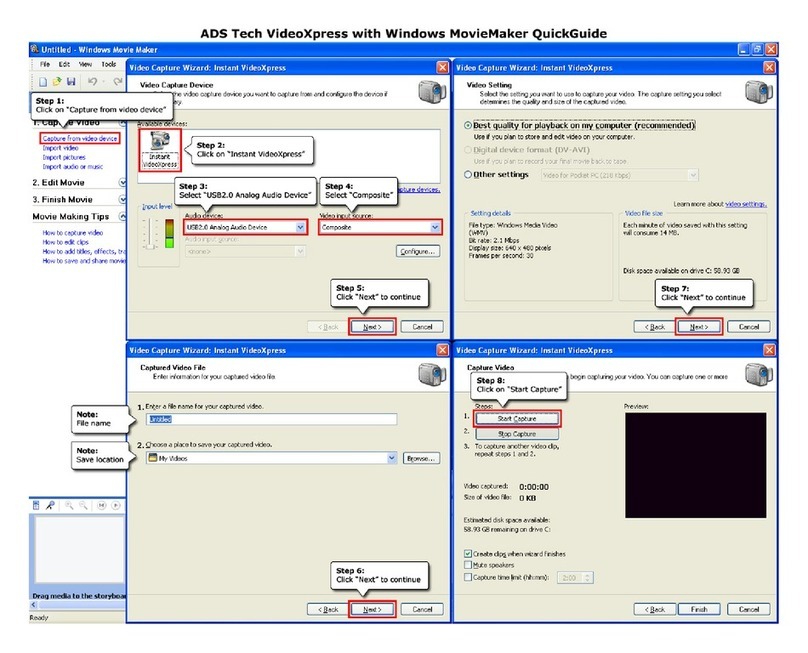
ADS Technologies
ADS Technologies USBAV-191-EF quick guide
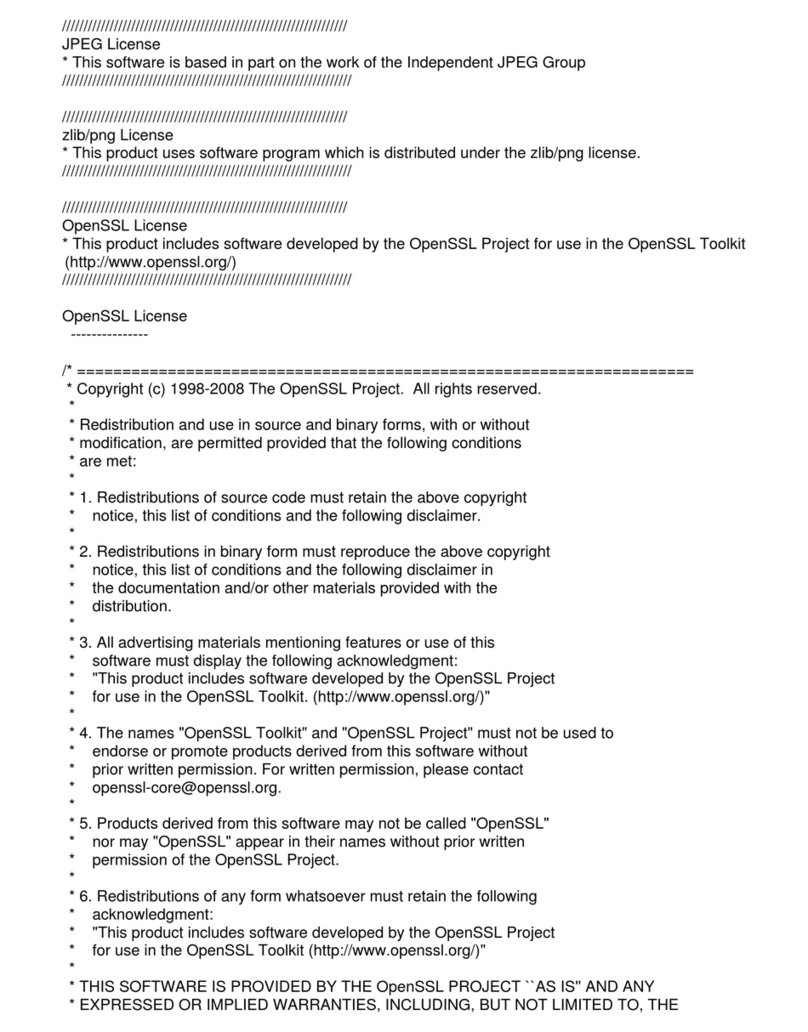
Samsung
Samsung CLX2160N - Color Laser - All-in-One license agreement
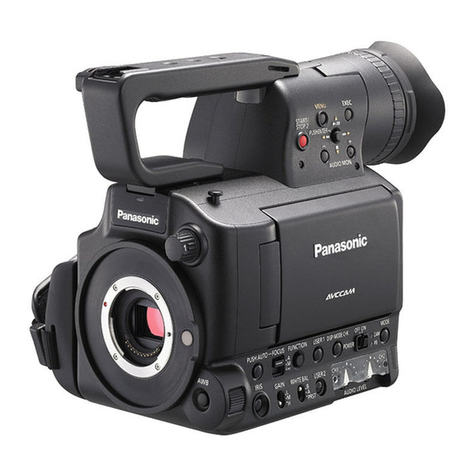
Panasonic
Panasonic Avccam AG-AF100A Series manual
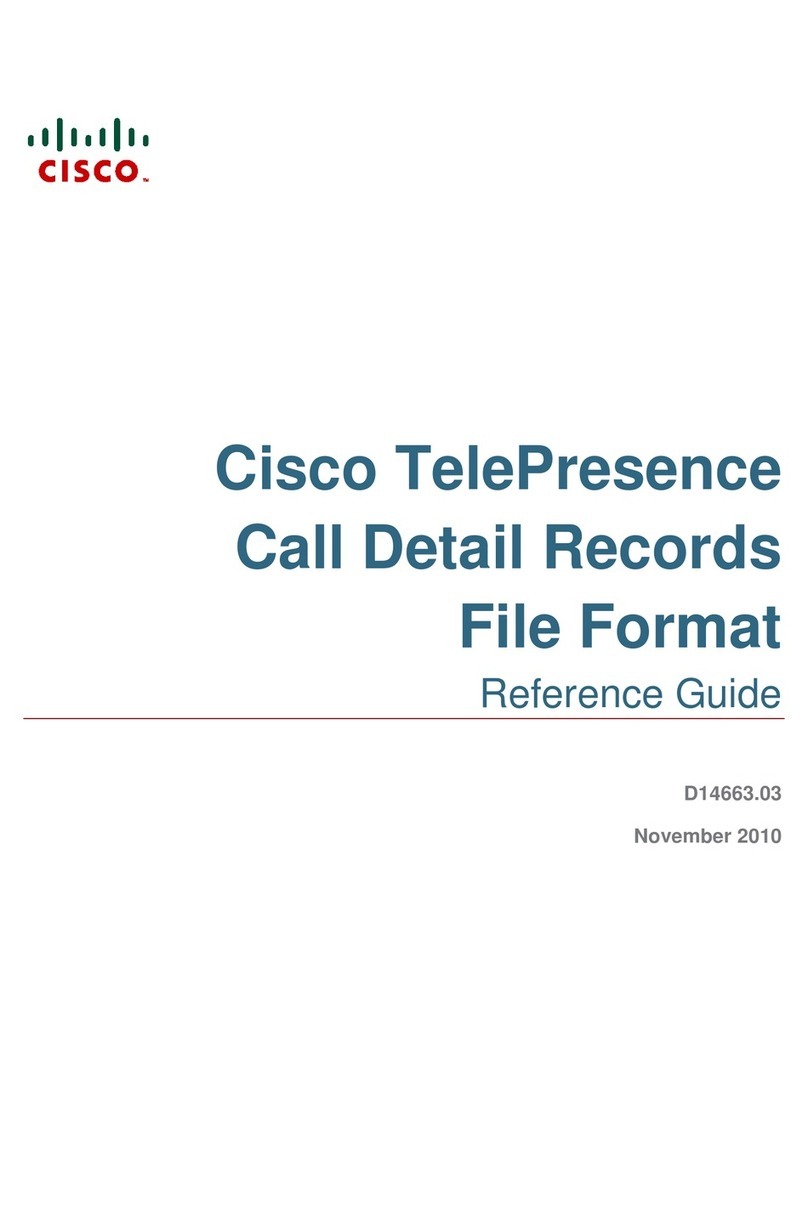
Cisco
Cisco TELEPRESENCE CALL DETAIL RECORDS FILE FORMAT... reference guide
